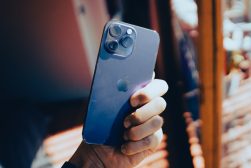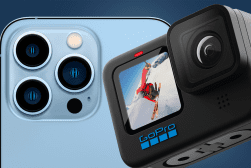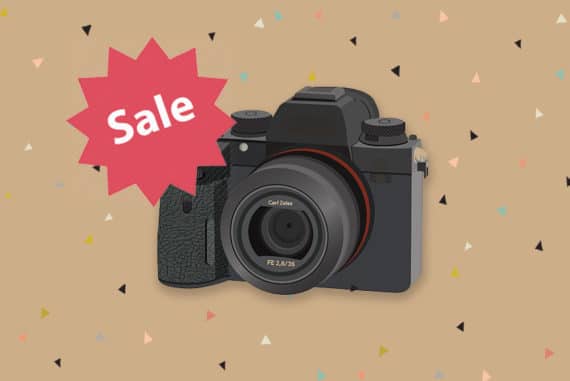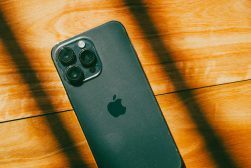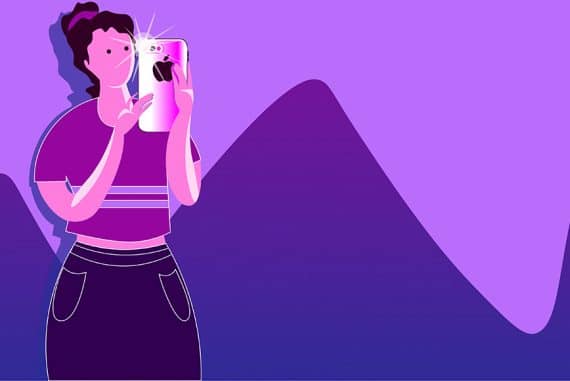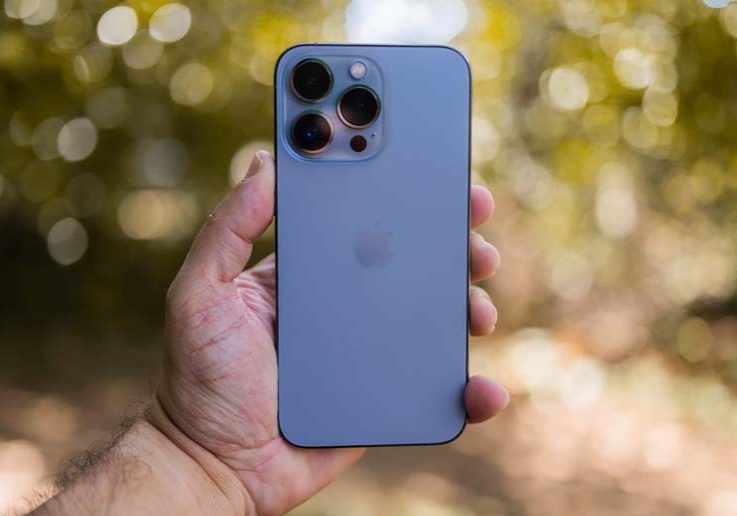
Difference Between iPhone Cameras: Which Is Best for You?
A mobile photographer’s guide to the best iPhone for photography, whether you’re looking for the very latest iPhone 14 or something older but less expensive.
If you ever wanted to know the difference between iPhone cameras, I’m about to cover every last detail.
Sometimes it feels like the Apple iPhone has a labyrinth of camera options.
Just when you’ve started to understand one aspect of iPhone photography, you stumble into a new maze of settings and menu options.

Want to learn how to take AMAZING photos with your iPhone? Discover hundreds of exciting secrets to totally transform your iPhone photography with this course!
Tap red button to save 80%
I’m always shooting on my iPhone and even after a few years, I’m still surprised by all of the settings I’m just starting to master.
One of the basics that you should cover right away is the differences between the three cameras on the back of your iPhone.
Why Do iPhones Have 3 Cameras?
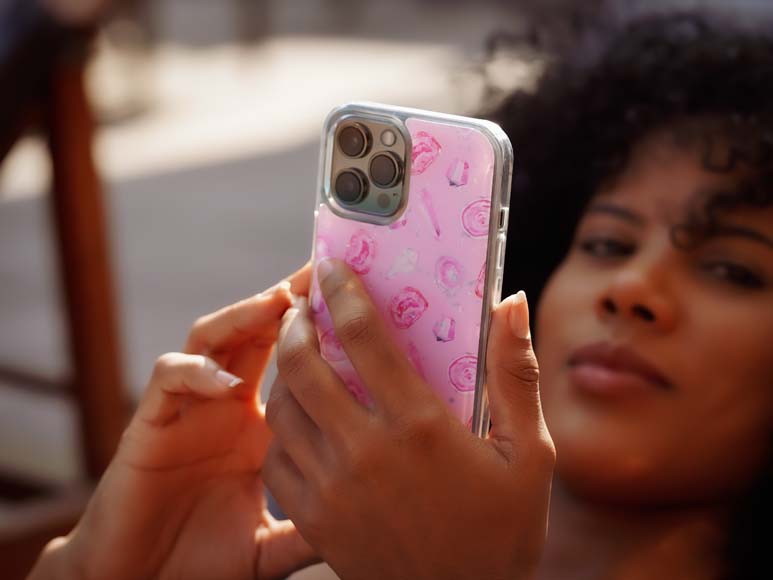
Image Credit: Heba
Smartphones have struggled with one major issue with their cameras and that has been the quality of digital zoom.
On a fundamental level, optical zoom will always be able to deliver better image quality than digital zoom.
Some early attempts to achieve optical zoom on a smartphone, like the Samsung Galaxy s4, featured a telescoping lens similar to what you’d see on a budget point-and-shoot camera.
However, those early attempts were too clunky to achieve mainstream success.
Enter the modern iPhone and its three-camera system.
The 3 iPhone cameras allow you to have a wide angle, ultra-wide angle, and telephoto option when shooting. This lets you have optical zoom on your smartphone without adding too much size and weight.
These cameras also give you different angles to shoot from and focal lengths to work with.
Depending on the model of iPhone you have, these cameras can also be used for different camera settings like portrait mode.
The three cameras can also work together to help you capture a better image and a more flexible exposure.
What are the Three iPhone Lenses? (And When to Use Each One)
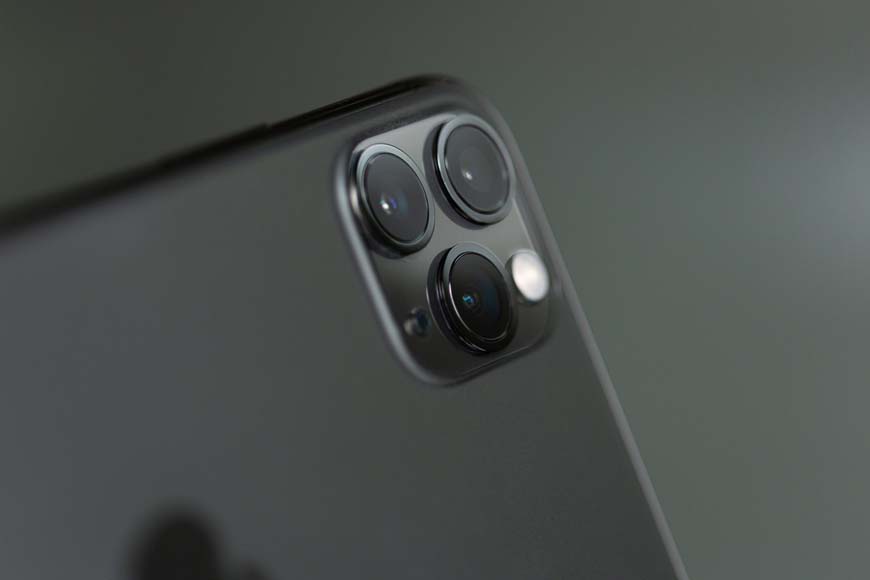
Image Credit: Torsten Dettlaff
iPhone camera quality is known to be one of the best in the market today. This is partly because of the optics that they use.
There are three main cameras on the back of your iPhone.
The exact specifications of each of these three cameras will vary depending on the model of iPhone that you own.
However, they’re going to share these basics in common.
Wide Angle – The All-Purpose Option
The wide-angle camera has a focal length of around 26 mm.
This is the default camera on the rear of the iPhone meaning that this is the camera that will be taking the majority of iPhone pictures you see in the world. This is the main workhorse among the iPhone cameras.
Information gathered by this wide-angle camera is also used inside the camera’s processor to help with things like exposure and image quality.
Telephoto – Portrait Mode and Optical Zoom
The telephoto lens is typically available on the Pro and Pro Max iPhone models. This is the lens that opens up portrait mode as it has a focal length of around 75 mm.
This lens is great for zooming in on far-away subjects, taking portraits, and compressing the scene for some unique compositions.
iPhones are better than GoPros and other action cameras since they offer these ‘flattering’ focal lengths, rather than just wide angles.
Ultra-wide Angle – Landscapes and Creative Framing
The ultra-wide camera creates a truly unique image that adds plenty of scenery to your mobile photography.
This lens has plenty of applications for photographers, but it’s also providing a lot of information about the iPhone’s image processing technology—even if you’re not using this particular camera to shoot your shot.
How Does the iPhone Camera Work?
Apple is always updating the software, and hardware, that goes into each of their camera phones.
I’m going to quickly cover a few high-level concepts on how these three separate camera systems work together.
The 26 mm wide-angle lens is the default lens of the Apple iPhone.
When you first open up your camera app, this is the focal length that you start out with.
You can either manually switch between which of the different cameras you’re shooting from or let the iPhone do the legwork for you by simply switching your camera mode.
For example, you’ll automatically switch over to the 2.5x telephoto camera when you switch to portrait mode.
These cameras are also working together behind the scenes. They team up to help the iPhone set the correct exposure as well as process high-quality images.
Apple iPhone Camera Comparison Chart (2024)
Here’s my comparison chart for all of the cameras available on every model of iPhone that is currently supported by Apple as of the writing of this article.
I tried to include the stats that are going to be the most important for photographers in your day-to-day use of this camera.
Things like chipsets, processor speed, and other details are very important, but these are the specifications that I feel have the biggest impact on the typical shooting experience.
| iPhone Model | Rear Camera Specifications | Front Camera Specifications | Optical Zoom | Digital Zoom | Video Quality |
| iPhone X | Dual 12 MP (wide, f/1.8) | 7 MP (f/2.2) | 2x Optical Zoom | 10x Digital Zoom | 4K at 24/30/60 fps, 1080p at 30/60/120/240 fps |
| iPhone XR | Single 12 MP (wide, f/1.8) | 7 MP (f/2.2) | – | 5x Digital Zoom | 4K at 24/30/60 fps, 1080p at 30/60/120/240 fps |
| iPhone XS | Dual 12 MP (wide, f/1.8) | 7 MP (f/2.2) | 2x Optical Zoom | 10x Digital Zoom | 4K at 24/30/60 fps, 1080p at 30/60/120/240 fps |
| iPhone XS Max | Dual 12 MP (wide, f/1.8) | 7 MP (f/2.2) | 2x Optical Zoom | 10x Digital Zoom | 4K at 24/30/60 fps, 1080p at 30/60/120/240 fps |
| iPhone 11 | Dual 12 MP (wide, f/1.8) + 12 MP (ultrawide, f/2.4) | 12 MP (f/2.2) | 2x Optical Zoom (wide) | 5x Digital Zoom | 4K at 24/30/60 fps, 1080p at 30/60/120/240 fps |
| iPhone 11 Pro | Triple 12 MP (wide, f/1.8) + 12 MP (telephoto, f/2.0) + 12 MP (ultrawide, f/2.4) | 12 MP (f/2.2) | 2x Optical Zoom (telephoto) | 10x Digital Zoom | 4K at 24/30/60 fps, 1080p at 30/60/120/240 fps |
| iPhone 11 Pro Max | Triple 12 MP (wide, f/1.8) + 12 MP (telephoto, f/2.0) + 12 MP (ultrawide, f/2.4) | 12 MP (f/2.2) | 2x Optical Zoom (telephoto) | 10x Digital Zoom | 4K at 24/30/60 fps, 1080p at 30/60/120/240 fps |
| iPhone 12 mini | Dual 12 MP (wide, f/1.6) | 12 MP (f/2.2) | 2x Optical Zoom | 5x Digital Zoom | 4K Dolby Vision HDR recording at 24/30/60 fps, 1080p at 30/60/120/240 fps |
| iPhone 12 | Dual 12 MP (wide, f/1.6) | 12 MP (f/2.2) | 2x Optical Zoom | 5x Digital Zoom | 4K Dolby Vision HDR recording at 24/30/60 fps, 1080p at 30/60/120/240 fps |
| iPhone 12 Pro | Triple 12 MP (wide, f/1.6) + 12 MP (telephoto, f/2.0) + 12 MP (ultrawide, f/2.4) | 12 MP (f/2.2) | 2x Optical Zoom (telephoto) | 10x Digital Zoom | 4K Dolby Vision HDR recording at 24/30/60 fps, 1080p at 30/60/120/240 fps |
| iPhone 12 Pro Max | Triple 12 MP (wide, f/1.6) + 12 MP (telephoto, f/2.0) + 12 MP (ultrawide, f/2.4) | 12 MP (f/2.2) | 2x Optical Zoom (telephoto) | 12x Digital Zoom | 4K Dolby Vision HDR recording at 24/30/60 fps, 1080p at 30/60/120/240 fps |
| iPhone 13 mini | Dual 12 MP (wide, f/1.6) | 12 MP (f/2.2) | 2x Optical Zoom | 5x Digital Zoom | 4K Dolby Vision HDR recording at 24/25/30/60 fps, 1080p at 25/30/60/120/240 fps |
| iPhone 13 | Dual 12 MP (wide, f/1.6) | 12 MP (f/2.2) | 2x Optical Zoom | 5x Digital Zoom | 4K Dolby Vision HDR recording at 24/25/30/60 fps, 1080p at 25/30/60/120/240 fps |
| iPhone 13 Pro | Triple 12 MP (wide, f/1.5) + 12 MP (telephoto, f/1.8) + 12 MP (ultrawide, f/1.8) | 12 MP (f/2.2) | 3x Optical Zoom (telephoto) | 15x Digital Zoom | 4K Dolby Vision HDR recording at 24/25/30/60 fps, 1080p at 25/30/60/120/240 fps |
| iPhone 13 Pro Max | Triple 12 MP (wide, f/1.5) + 12 MP (telephoto, f/1.8) + 12 MP (ultrawide, f/1.8) | 12 MP (f/2.2) | 3x Optical Zoom (telephoto) | 15x Digital Zoom | 4K Dolby Vision HDR recording at 24/25/30/60 fps, 1080p at 25/30/60/120/240 fps |
| iPhone 14 | Triple 12 MP (wide, f/1.5) + 12 MP (telephoto, f/1.8) + 12 MP (ultrawide, f/1.8) | 12 MP (f/1.9) | 3x Optical Zoom (telephoto) | 15x Digital Zoom | 4K Dolby Vision HDR recording at 24/30/60 fps, 1080p at 30/60/120/240 fps |
| iPhone 14 Plus | Triple 12 MP (wide, f/1.5) + 12 MP (telephoto, f/1.8) + 12 MP (ultrawide, f/1.8) | 12 MP (f/1.9) | 3x Optical Zoom (telephoto) | 15x Digital Zoom | 4K Dolby Vision HDR recording at 24/30/60 fps, 1080p at 30/60/120/240 fps |
| iPhone 14 Pro | Triple 12 MP (wide, f/1.5) + 12 MP (telephoto, f/1.8) + 12 MP (ultrawide, f/1.8) | 12 MP (f/1.9) | 3x Optical Zoom (telephoto) | 15x Digital Zoom | 4K Dolby Vision HDR recording at 24/30/60 fps, 1080p at 30/60/120/240 fps |
| iPhone 14 Pro Max | Triple 12 MP (wide, f/1.5) + 12 MP (telephoto, f/1.8) + 12 MP (ultrawide, f/1.8) | 12 MP (f/1.9) | 3x Optical Zoom (telephoto) | 15x Digital Zoom | 4K Dolby Vision HDR recording at 24/30/60 fps, 1080p at 30/60/120/240 fps |
Which iPhone Has the Best Camera Quality in 2024?
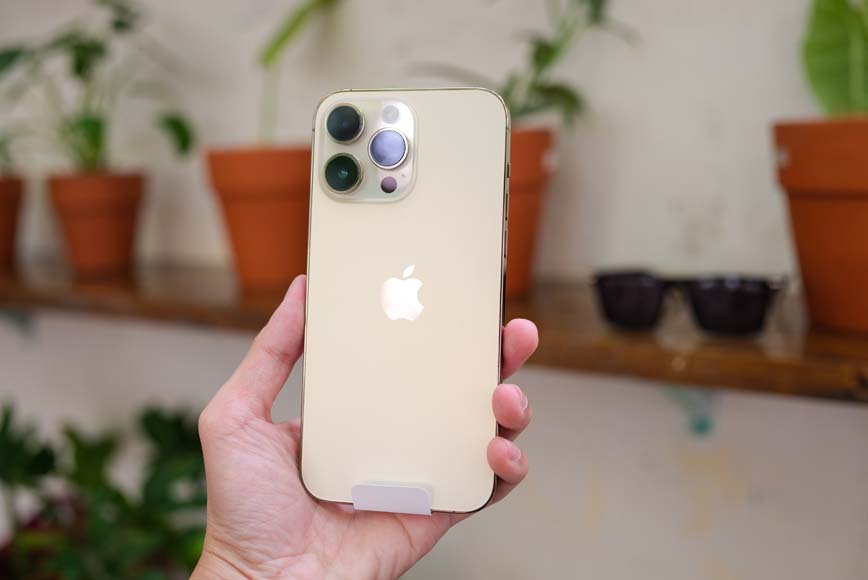
Image Credit: Thai Nguyen
I wanted to say upfront that image quality is all about artistic sensibility and can be very subjective.
The talent of the photographer also makes a huge impact on image quality, but there is one iPhone that stands out—at least on paper.
Any of the iPhone 14 models will have better camera quality than any of their predecessors. These cameras simply have better lenses, better software, and better hardware to work with. iPhone camera comparison between older and newer generations would be futile.
As of the writing of this article, the Apple iPhone 14 Pro Max is the best overall iPhone for photographic quality. If you are asking which iPhone has the best camera, so far this is it.
Gear to Improve Your iPhone Photography and Videos
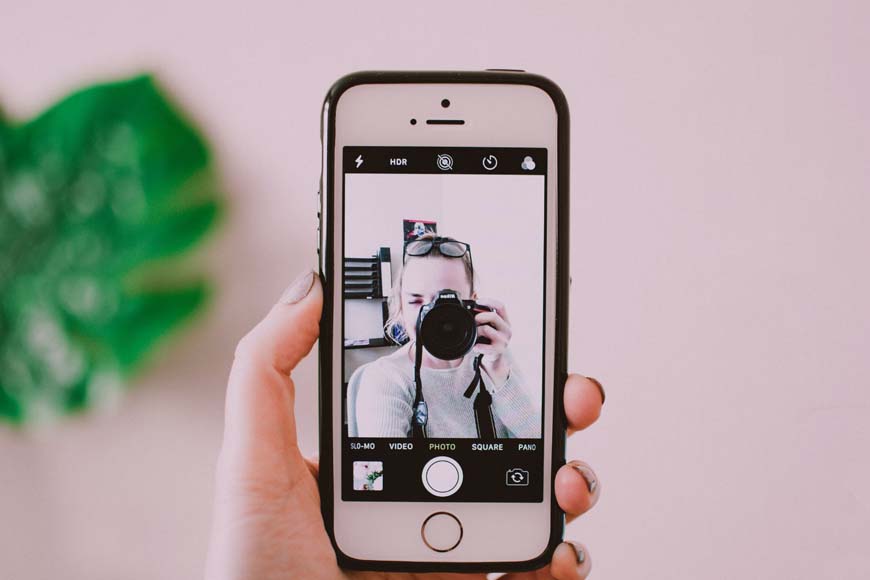
Image Credit: Lisa Fotios
There are four pieces of gear that I see as being essential for any aspiring iPhone photographer.
Regardless of what model iPhone you’re using, these are the four pieces of gear that you should pick up to support your growing skillset.
Tripod
Picking up a good tripod is an absolute must for an iPhone photographer.
The technical specifications of the iPhone camera system are pretty impressive, but nothing beats the utility and potential of a good old-fashioned tripod.
Not only does a tripod help you stabilize photos and video footage, but it’s also going to give you so much more freedom when it comes to how you compose your shots. This is especially true if you want to take your self-portraiture game to a new level.
Lights
While it’s true that there is a flash functionality on most Apple iPhone cameras, I’ve honestly never used mine. The very first thing I did when I powered up my iPhone was turn the flash off.
I’ve got external lights that I can use if I feel like shooting on my iPhone in the studio and I use my iPhone to try and explore some interesting compositions if I’m shooting in the city at night.
This is a good opportunity to leave the hazard flash behind and start to explore the world of external and natural light sources.
Apple also makes a great camera phone when it comes to night mode. Your low light shots are going to start ahead of the game thanks to night mode even if you don’t have external lights to work with.
Lenses
The three extra cameras on your iPhone each have their own dedicated lens, but there’s a whole world of smartphone camera lenses out there for you to explore.
I personally own the entire set of Moment lenses. This includes a macro lens, a fisheye lens, a wide-angle lens, a telephoto lens, and an anamorphic lens.
Each of these lenses offer something that the built-in lenses on the iPhone just can’t accomplish on their own.
Besides, I get to live the dream of interchangeable lenses on a smartphone without marketing missteps like the Red Hydrogen One.
Audio Gear
This next one is for everyone out there who shoots a video on their Apple iPhone.
Your onboard video quality is already great, but the audio quality has notably lagged behind. This is simply a limitation of the size and type of audio hardware that can be built into something with the form factor of a smartphone.
External microphones like those from Rode or the Lark M1 will clean up your audio and dramatically improve the quality of your videos.
Which iPhone Camera Should You Pick?
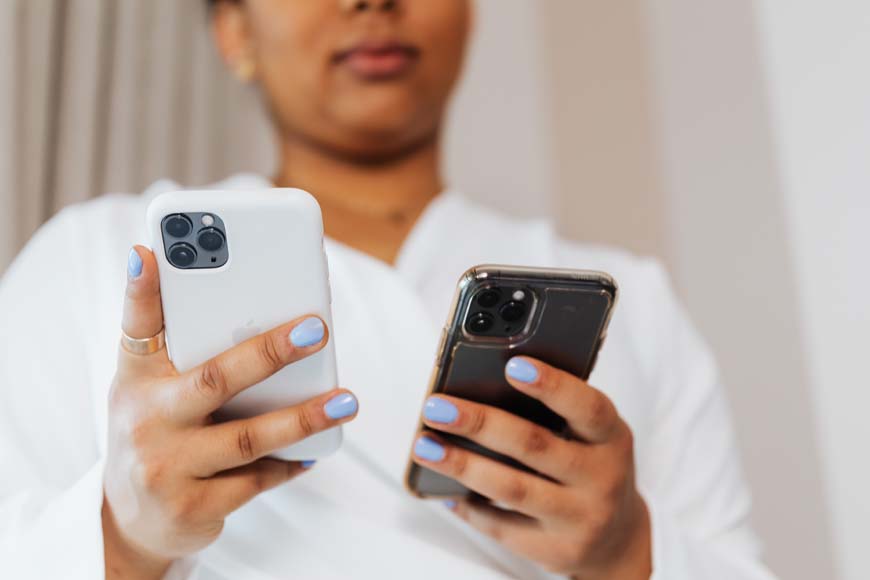
Image Credit: Karolina Grabowska
If this will be your first experience with iPhone photography, I recommend picking up the Apple iPhone 14 Pro Max. Set yourself up for a win and get started with the best piece of photographic technology the iPhone has released to date.
However, don’t let this deter you from using the iPhone that you have you already have. I still do most of my shooting on my trusty iPhone 12 Pro Max and I don’t feel like I’m being “held back” by using slightly outdated equipment.
There’s also something freeing about shooting on one of the older but still yet supported, iPhone models.
To be honest, I’m very comfortable taking my iPhone 12 Pro Max on some pretty wild shoots. I’d be a lot less comfortable taking out a newer, more expensive, smartphone that doesn’t already have some character.
I would also strongly recommend that you pick up one of the Pro or Pro Max iPhone models that allows you to use all three cameras.
In my experience, I’d rather have an iPhone 11 Pro than the iPhone 14 base model just to have that extra lens. I value photographic flexibility higher than I value the latest technical specs.
FAQ
What are the different iPhone cameras for?
The three different cameras on the Apple iPhone each cover different focal lengths including wide angle, ultra wide, and telephoto. These three cameras also work together for optical zoom, shooting outside the frame, and generally improving the quality of your shots.
Is the iPhone 14 camera better than iPhone 13?
The iPhone 14 generally has a better camera than the iPhone 13. Apple updated the iPhone 14 camera to include a wider angle lens, Action Mode, and improved image clarity.
What’s the difference between the two cameras on the iPhone 12?
The base model of the iPhone 12 comes with two rear camera options. One of these is the standard wide-angle camera that is similar to the previous iPhone cameras. The new addition is an ultra wide camera with a more expensive viewing area. The iPhone Pro 12 Pro and 12 Pro Max also feature a telephoto camera option.
What is the difference between iPhone 12 and 13 cameras?
The iPhone 13 camera features a few noticeable upgrades from the iPhone 12 model. Advancements and processing as well as software mean crisper photos and higher quality video. The iPhone 13 also features a larger sensor size and faster aperture on one of its cameras meaning better low light performance.
Difference Between iPhone Cameras: Final Words
The world of mobile photography has come a long way in recent years.
While smartphone photography has always had a following, it’s easier than ever before to take great pics and videos with your iPhone.
I hope this guide has helped you wrap your head around all of the different camera options that come with the iPhone.
Remember, you can start taking amazing quality pictures but the smartphone you already have!
Is there a question you have about iPhone photography or something that’s been holding back your work behind the mobile camera?
Let me know in the comments and I’ll answer your questions in an upcoming guide.

Want to learn how to take AMAZING photos with your iPhone? Discover hundreds of exciting secrets to totally transform your iPhone photography with this course!
Tap red button to save 80%





